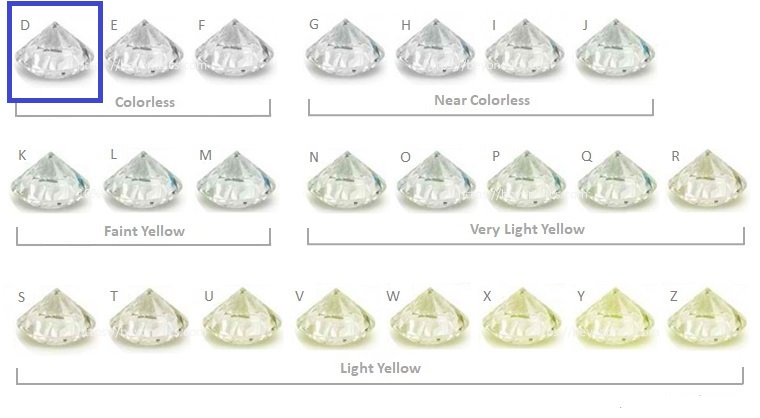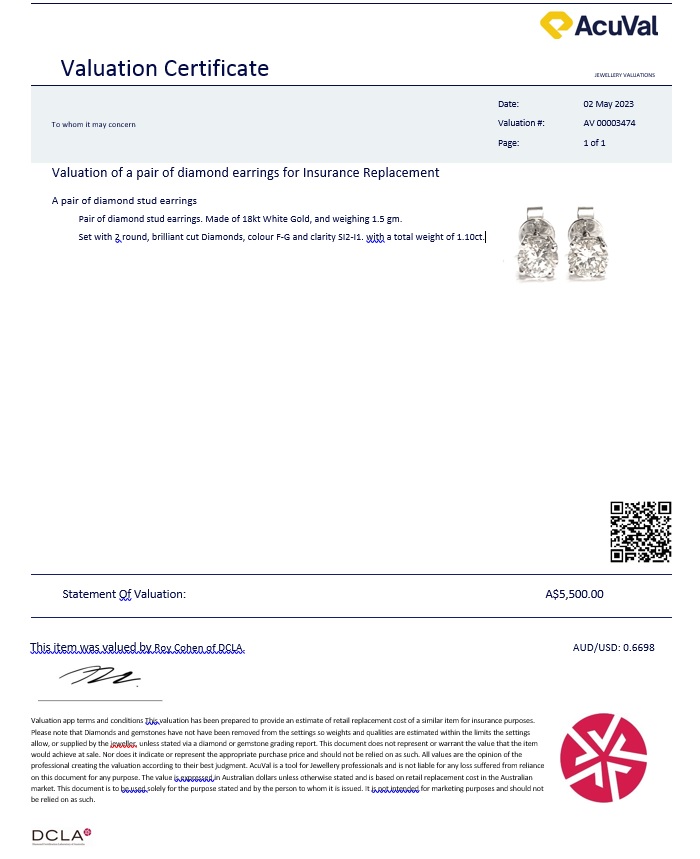Diamond or Jewellery Appraisal or Valuation is a professional evaluation of a diamond or piece of jewellery to determine its market value, quality, and authenticity. Appraisals are commonly used for a variety of purposes, such as insurance coverage, estate planning, selling, or simply understanding the true worth of a piece.
Here’s a detailed overview of what diamond and jewellery appraisal or valuation involves:
1. What is a Diamond Appraisal?
A diamond appraisal is an expert assessment of a diamond’s value based on specific criteria like quality, size, and rarity. The appraisal typically provides a written report or certificate that outlines the key characteristics of the diamond, which will help in determining its worth in the market.
2. Purpose of Diamond or Jewellery Appraisal
Insurance Purposes: Appraisals are commonly needed to ensure that valuable jewellery is properly insured for loss, theft, or damage. The value provided by the appraiser is used to set an appropriate insurance policy.
Selling or Resale: If you are selling a diamond or piece of jewellery, an appraisal helps to determine its market value, which is important for negotiating a fair price.
Estate Planning: When dividing an estate, appraisals help establish the value of diamonds and jewellery to ensure assets are fairly distributed.
Divorce Settlements: Appraisals can assist in determining the value of jewellery in the context of a divorce, ensuring a fair distribution of assets.
Taxation Purposes: Appraisals may be required when valuing jewellery for estate taxes, donations, or capital gains tax.
3. Key Factors in Diamond Valuation
The value of a diamond is typically assessed based on the 4 C’s:
Carat Weight:
The weight of the diamond is a major factor. Larger diamonds are generally more valuable due to their rarity.
Cut:
The cut refers to how well the diamond has been shaped and faceted. It affects how light is reflected and determines the diamond’s brilliance and sparkle.
The cut grade (Excellent, Very Good, Good, etc.) plays a critical role in determining value.
Colour:
The colour of a diamond is graded on a scale from D (colourless) to Z (light yellow or brown). Diamonds that are colourless or near colourless are typically more valuable.
Clarity:
Clarity refers to the presence of internal or external flaws (called inclusions and blemishes). The fewer imperfections, the higher the clarity, and generally, the higher the value.
Certification:
Diamonds that come with a certification from a reputable grading lab like GIA, DCLA, or AGS are generally more valuable because they offer an independent verification of the diamond’s quality.
4. Jewellery Valuation
While diamonds are the focal point of many jewellery valuations, jewellery itself is also valued based on factors such as:
Metal Type and Weight: The karat and type of metal (gold, platinum, silver, etc.) contribute to the value. The weight of the metal, often measured in grams, plays an important role, especially for gold and platinum.
Gemstones: The inclusion of other gemstones (rubies, sapphires, emeralds, etc.) can increase the value of the jewellery. The quality, cut, and size of these stones are important factors in their appraisal.
Craftsmanship: The level of craftsmanship in the jewellery, such as whether it is mass-produced or custom-made, can affect its value. Handcrafted pieces or designer jewellery often carry a premium.
Antique or Vintage Value: Jewellery that is considered vintage or antique may have historical or collector’s value, which can increase its worth.
Brand: Certain designer or branded jewellery (e.g., Cartier, Tiffany, Van Cleef & Arpels) can significantly increase the value.
5. The Appraisal Process
Here is an outline of the general process involved in diamond and jewellery appraisal:
Initial Inspection:
The appraiser will inspect the diamond or jewellery, examining its physical characteristics, such as shape, size, and setting.
For diamonds, the 4 C’s will be assessed, and any certificates or grading reports provided by labs like DCLA, GIA, or AGS will be reviewed.
Gemological Testing:
A gemologist may use specific tools, such as a loupe or microscope, to evaluate internal inclusions or flaws in the diamond or gemstones. They may also test the metal composition of the jewellery.
Research and Market Comparison:
The appraiser will compare the jewellery or diamond to similar items currently on the market to determine its fair market value.
For diamonds, the appraiser will use databases or retail price guides to ensure accurate pricing.
Written Report:
The appraiser will provide a detailed written report that outlines the diamond’s characteristics, including the 4 C’s, or the jewellery’s key factors (e.g., weight, metal, gemstones, and condition).
The report will typically include a valuation or estimated market value, and in some cases, the report may also include a photograph of the jewellery or diamond for identification purposes.
6. Certification and Standards
A certified appraiser will perform the valuation. In many cases, the appraiser will hold certifications from professional organizations like the Gemological Institute of America (GIA) or the National Association of Jewelry Appraisers (NAJA).
For diamonds, having a certified grading report from recognized laboratories like GIA, DCLA, or AGSL can add credibility to the appraisal.
7. Cost of Diamond or Jewellery Appraisal
Appraisal Fees: The cost of an appraisal depends on various factors, such as the complexity of the piece, the appraiser’s qualifications, and the region. It is usually charged either by the hour or as a flat fee for each item.
For example, appraisers may charge £50-£150 per hour or a flat rate of £50-£200 per piece, depending on its value and complexity.
Some jewellery stores or pawnshops offer free appraisals, but it is important to ensure they are reputable and unbiased.
8. Diamond Appraisal vs. Diamond Grading
Grading involves evaluating the quality of the diamond based on the 4 C’s, typically performed by an independent lab like DCLA or GIA. This is a scientific, objective assessment.
Appraisal, on the other hand, involves determining the market value of the diamond or jewellery, which may include the cost of the stone itself, craftsmanship, rarity, and market conditions.




